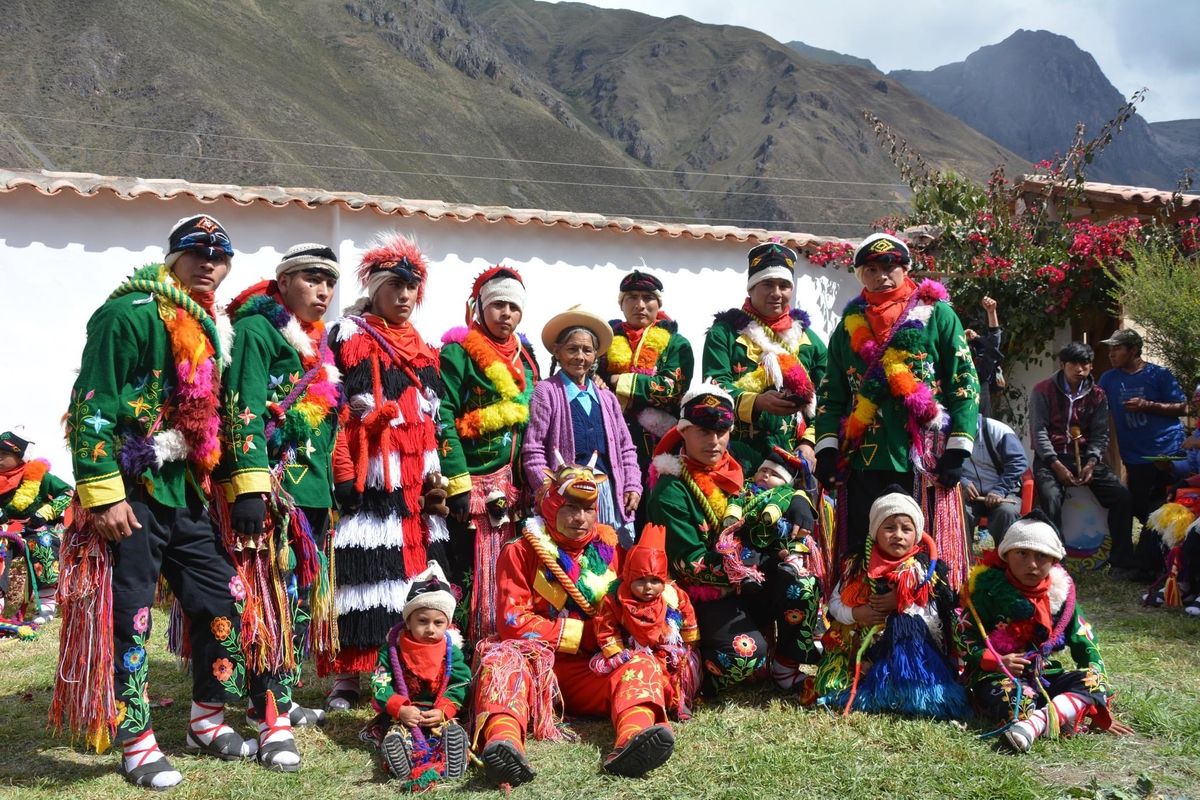A Symphony of Generations: Unraveling the Legacy of the Zapata Family's Traditional Dance in Peru

For centuries, traditional dances and folk rituals have served as significant bearers of cultural identity, transmitted from one generation to the next. This intergenerational bond is a pivotal means by which communities preserve their heritage and cultural richness. The Zapata family, from Peru, offers a vibrant illustration of this process. They have been participants in the dance for the Lord of Choqekillka, particularly the K'achampas, for five generations.
The lineage of the Zapata family's dance traditions dates back to patriarch Lorenzo Zapata Romero, who passed on these traditions to his son, Lorenzo. Following them were the grandchildren - Juan, Victor, and Clímaco, the great-grandchildren, and now, the great-great-grandchildren, continuing the dance as offerings to the Lord.
In Don Lorenzo Zapata Pomarrosa's family line, the position of Kusillo has been embraced. The tradition is upheld by Don Lorenzo's wife, Mrs. Juana Maria Acurio, and her daughter Luchita, who continued the tradition by dancing Chunchacha. The great-granddaughters now dance the Chunchacha and Qoyacha dances.
The Zapata family, with their devout commitment and joy, will continue to grace the celebration of our Patron. Their saga elucidates the profound significance of intergenerational bonding.
The Power of Intergenerational Bonding
Intergenerational bonding is crucial for several reasons. Firstly, it preserves cultural continuity. When traditions, such as the dance for the Lord of Choqekillka, are passed from elders to the younger generation, they keep alive the cultural history. This creates a strong link between the past and present, enabling younger generations to understand and appreciate their heritage.
Secondly, intergenerational bonding strengthens familial ties. Within the Zapata family, the dance tradition is a unifying force that brings together different generations for a common purpose. This has built a strong sense of bonding and solidarity within the family.
Thirdly, intergenerational bonding shapes the identity of a community. When traditions, like the Zapata family's dance, persist over time, they become part of a community's identity and heritage. This fosters a strong sense of community and helps community members understand their place within this larger social structure.
Furthermore, intergenerational bonding ensures the continuity of cultural values and norms. Traditions like the dance for the Lord of Choqekillka carry deeper messages and lessons, which can help younger generations understand the values and norms of their society. This is important for maintaining social order and stability within a society.
The Zapata Family: Intergenerational Bonding through Dance
In the context of the Zapata family's dance tradition, it's clear that intergenerational bonding serves as a tool for ensuring cultural continuity, as well as a medium that strengthens familial and communal ties. This tradition has not only helped the family preserve its cultural heritage but has also fostered a robust familial bond that spans across five generations.
This tradition has crafted a potent community identity, based on shared heritage and collective experiences. The Zapata family's dance tradition serves as a testament to how intergenerational bonding can be a powerful instrument for reinforcing cultural identity and unity.
In conclusion, intergenerational bonding plays a pivotal role in preserving traditions, strengthening cohesion, and perpetuating cultural identity. The traditions of the Zapata family underscore these points while offering a beautiful illustration of how intergenerational bonding can bring joy, commitment, and solidarity to an entire community.



Comments ()